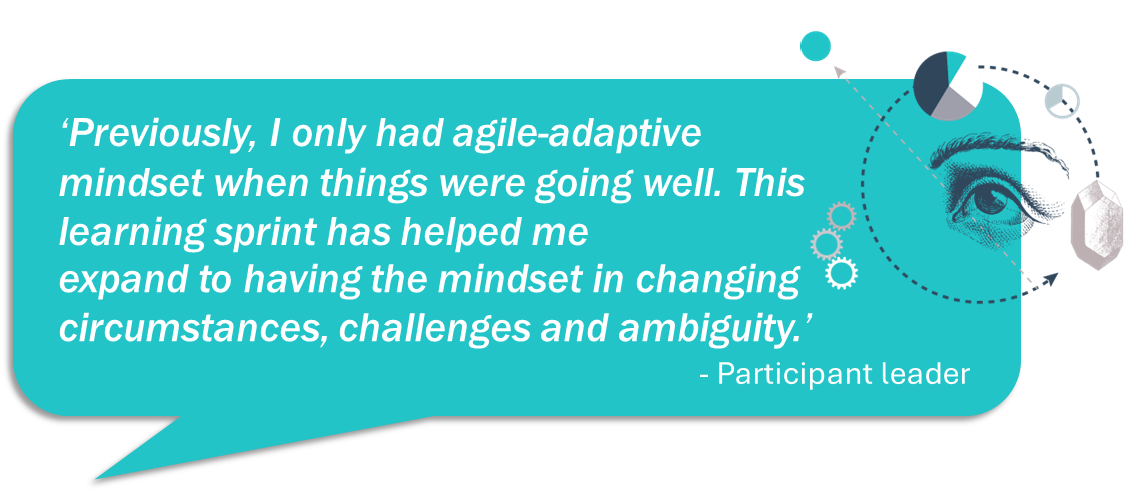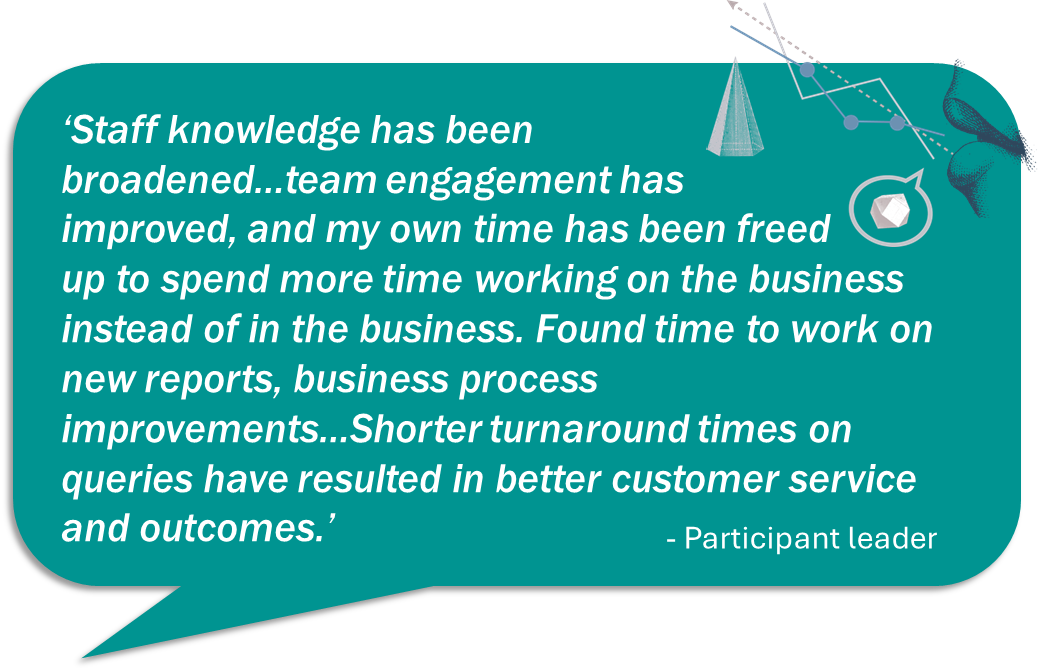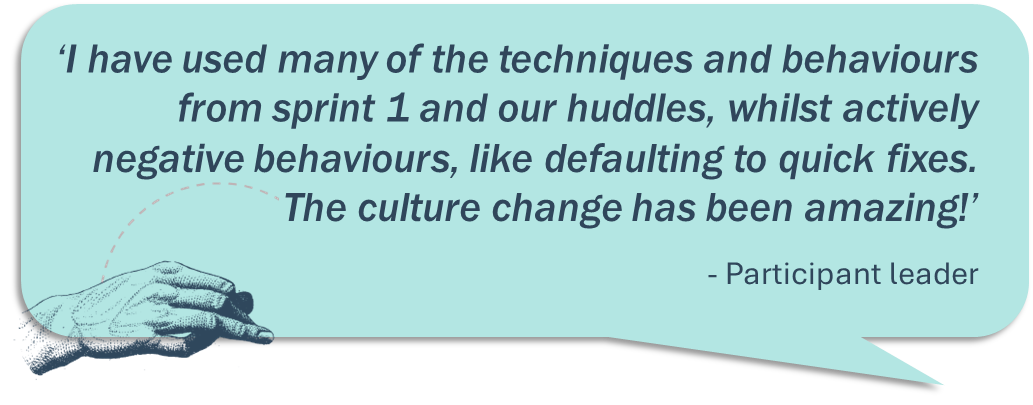Building future leadership skills across a major insurer
In both sprints, participants chose to experiment with 1-3 new behaviours. These were aligned to adaptive leadership skills (sprint 1); and data and digital leadership skills (sprint 2). Through the sprint process, participants access learning relevant to their area of opportunity, and applied it to real-world challenges.
Armed with simple tools to ensure their activities were focused on small changes that would deliver big results, Leaders saw, though their own behavioural experiments, what was possible to influence in terms of performance and efficiency across their teams.
This helped build momentum for the shift towards a continuous learning culture, with leaders realising the benefit of on-the-job application of learning in pursuit of a meaningful objective.
Data and digital maturity was built throughout the program, both through the content and the process; with leaders using multiple digital tools, datasets and generative AI to aid their experimentation, evidence their progress and record their outcomes.
Through both learning sprints, leaders tracked their experiments, documenting what worked and what didn’t, what behavioural shifts they saw in their teams and their own leadership, and what outcomes they achieved. This was shared across the Retrospective sessions, with data captured on what leaders implemented and how it impacted performance, providing a holistic picture of the return-on-investment on the program across the business.
Outcomes
The program delivered an uplift in leader capability, confidence, and performance. Highlights included:
43% found more effective or new ways of working through sprint 2, indicating productivity and performance gains
20% uplift in AI use; 56% of participants had accessed AI prior to the program, rising to 76% regularly using it after sprint 1
37% of participants discovered ways to increase capacity and save time in sprint 1
13.5% positive shift in data maturity pre-sprint 1, to post-sprint 2, a significant shift, across a 5-month period
85% attendance across all activities/all participants for an opt-in program
94% of participants saw the benefit in applying the knowledge, mindsets or skills gained from the sprints into their day-to-day leadership after the first sprint
82% of participants completed a reflective case study, documenting their learning, application, outcomes and behavioural shift
81% of participants agreed that they became more familiar and comfortable with the learning approach in Sprint 1, showing a shift in understanding and effectiveness of agile learning
2554 pieces of curated self-paced content accessed; an average of 4 per leader, and 984 peer huddles were completed with leaders attending an average of 4.5 huddles across both sprints
Leaders saw benefits to their leadership in multiple areas, including increased collaboration, improved strategic thinking, helping to grow and develop their team, discovered ways to increase capacity/save time and hone problem-solving skills
Client
Major Insurer operating in Australia, New Zealand and the Pacific
Audience
650 People Leaders enrolled across 10 business units: Business, Claims, Consumer, Finance, New Zealand & Pacific, People, Risk, Technology Services, Underwriting & Transformation, and Enterprise Operations.
Program
Future Skills Leadership Development
Purpose
To realise their modernisation and digitisation strategy, this Major Insurer recognised that transformation is only as good as the people working within it, and there was a need for leaders to develop more adaptive and agile leadership abilities, along with data and digital-savvy skills, to steer their teams through the complexities, uncertainties, and disruptions in current business practices while still delivering solid performance outcomes.
Key program objectives
To embed adaptive leadership mindsets and skillsets, empowering leaders to effectively enable their teams to adapt to rapidly shifting business landscapes and deliver strong performance outcomes.
To measure the data maturity of the cohort and equip leaders to capitalise on data-driven decision-making.
To continue to evolve a continuous learning culture that transfers learning content into embedded on-the-job application.
Duration
2x 8-week learning sprints, delivered over 5 months. Each sprint required a total learning time of just 7 hours per leader; with a strong focus on on-the-job application of skills.
Included
Skills assessment on Adaptive Leadership and Data and Digital-savvy leadership behaviours demonstrated
Agile process and methodology baked into the process and learning sprint
Large group webinars that communicated the why, what and the how
Self-paced learning content that was aligned to each leader’s individual needs and skill development
Virtual workshops that helped turn learning into on-the-job application and purposeful experimentation
Guided peer huddles that facilitated social learning
Virtual Retrospective sessions where learning reflections, real-world outcomes from application and behavioural shifts/skill uplifts were shared and captured
Post-pre assessment to gauge data maturity and uplift
Theories Used
Aggregation of marginal gains
Tactical leadership: focus, frequency, quality
Micro-behavioural approach
Self-determination theory
70-20-10 learning model: leveraging on-the-job application
Deliberate practice
Purposeful experimentation






